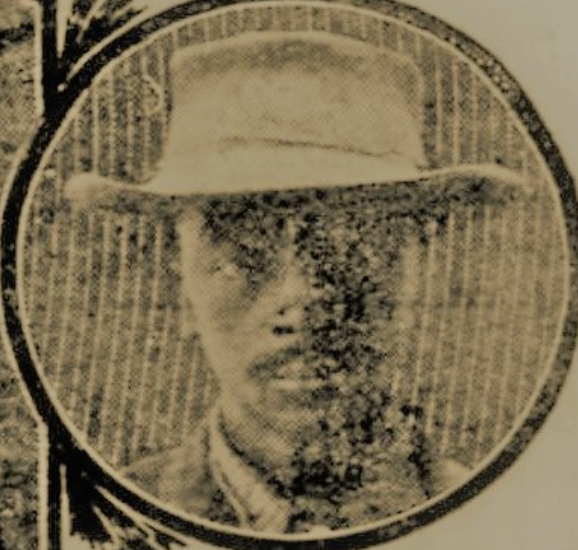
Ed Johnson
Dr. Howard Jones stepped to the pulpit of the First Baptist Church in Chattanooga, Tenn., 115 years ago.
A congregation of more than 400 white people were in the pews, including many of the most prominent citizens of the area. Dr. Jones turned his King James version Bible to Galatians 6:7 and read.
“Whatsoever a man soweth, that shall he also reap.”
Six days earlier, the community had been rocked when a mob of a few hundred raided the county jail and took an inmate named Ed Johnson – a man who would later be proven innocent of the crimes against him – and dragged him to the county bridge that spans over the Tennessee River.
The mob of mostly lower-income, under-educated white suburban men put a noose around Johnson’s neck. Leaders of the mob told Johnson that nothing he could say would save his life, so he might as well confess.
“God bless you all,” Johnson answered. “I am innocent.”
The infuriated mob lifted his body into the air. Johnson hung by the neck for nearly five minutes, but his body continued to move. The mob opened fire. He was shot more than 50 times. A deputy sheriff walked up. Reloaded his and shot Johnson five more times. The deputy then pinned a note into Johnson’s chest addressed to U.S. Supreme Court Justice John Marshall Harlan, who had ordered that local officials protect Johnson until the federal courts ruled on his appeal.
“Here’s your negro now. Try to save him.”
On March 25, 1906, Dr. Jones mounted the lectern to deliver his sermon that is as relevant today as it was a century ago. Dr. Jones had a college degree from Washington & Lee University. His father had been General Robert E. Lee’s personal chaplain. Deacons at his church warned Dr. Jones against this sermon. The judge, district attorney, sheriff and local business leaders were among the parishioners. They said he would be removed as the church’s pastor. Or worse. Dr. Jones ignored them.
“Whatsoever a man soweth, that shall he also reap.”
“Let us now briefly consider the events of last Monday night. They are not pretty, nor poetic. With evidence of a carefully premediated program … [the mob] owing to their haste to get at their bloody business, they destroyed with sledges the usefulness of keys and they toiled at the steel bolts which were more loyal to Chattanooga’s interests than all of her citizenship.’
“The worst elements of the white men of this community took over the reins of government [this week.] Was this disgrace ever rebuked? Has any arrest of those men who unsheathed their keen blades and struck deadly blows at the very heart of our civilization ever been effected? Does anyone here know of any attempt?”
“Ah, ah, but you say, ‘we were afraid.’ Afraid? Afraid of what? Afraid of the most vicious, Godless, ignorant and depraved of the white men of this community. Why did we not stop and consider that anarchy was already in our midst when a community was terrorized into a weak compromise with its most dangerous citizens.”
“Whatsoever a man soweth, that shall he also reap.”
“Lawlessness begets lawlessness. It always has and always will. Sow an act of lawlessness and you will get a harvest of lawless conditions. If this is not true, civilization is a farce and anarchy is the best goal to strive for.”
“Take your place in the gray dawn of that fatal Friday outside the Praetorium, where Pontius Pilate stands before the fury of the mob and presents the only sinless one who ever lived, and say, ‘Behold the Man.’
“Hear the hoarse cry of that awful creature, the mob, as it answers back, ‘Crucify Him! Crucify Him! Crucify Him!’ And then stand forth and tell me if you hope by the force and fury of a mob to accomplish anything but destroy the best and crucify the holiest.”
The deacons were right. The congregation fired Dr. Jones as the church’s pastor. A few days later, his home was burned to the ground. He and his family fled Tennessee for their lives.
Two decades ago next month, trial lawyer Leroy Phillips stood in the very courtroom where Johnson, a poor young black man with a third-grade education, had been convicted of raping a white woman in 1906. Phillips presented overwhelming evidence of Johnson’s innocence. I was the only witness put under oath in the hearing that day. Hamilton County District Attorney Bill Cox rose to his feet to make the state’s argument. His words shocked everyone. He had reviewed the evidence and agreed that Johnson had been wrongly convicted. The conviction was reversed 94 years after Johnson’s lynching.
Dr. Jones ended his sermon that Sunday in 1906 with this:
“Whatsoever a man – or a community soweth – that shall they also reap.”
